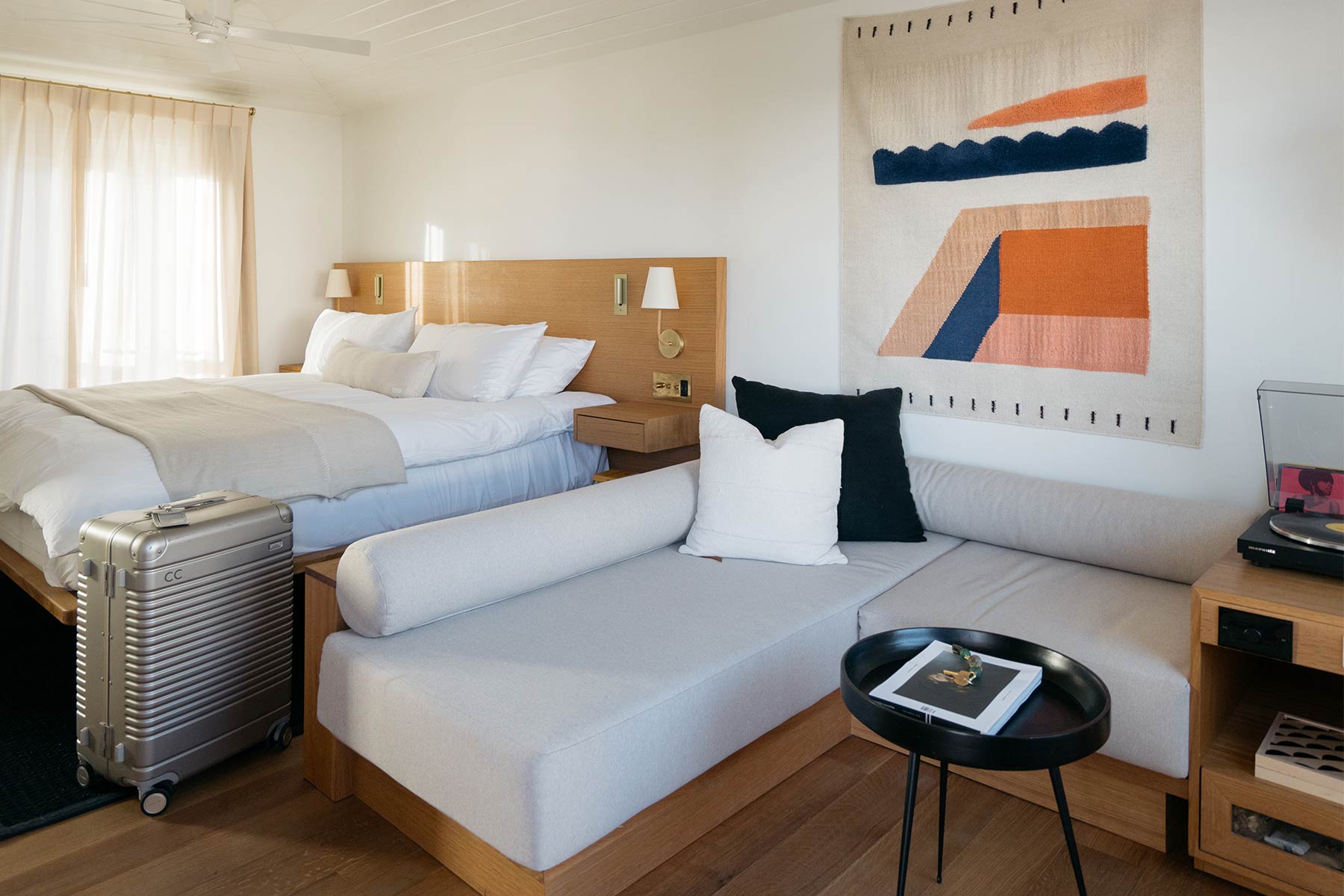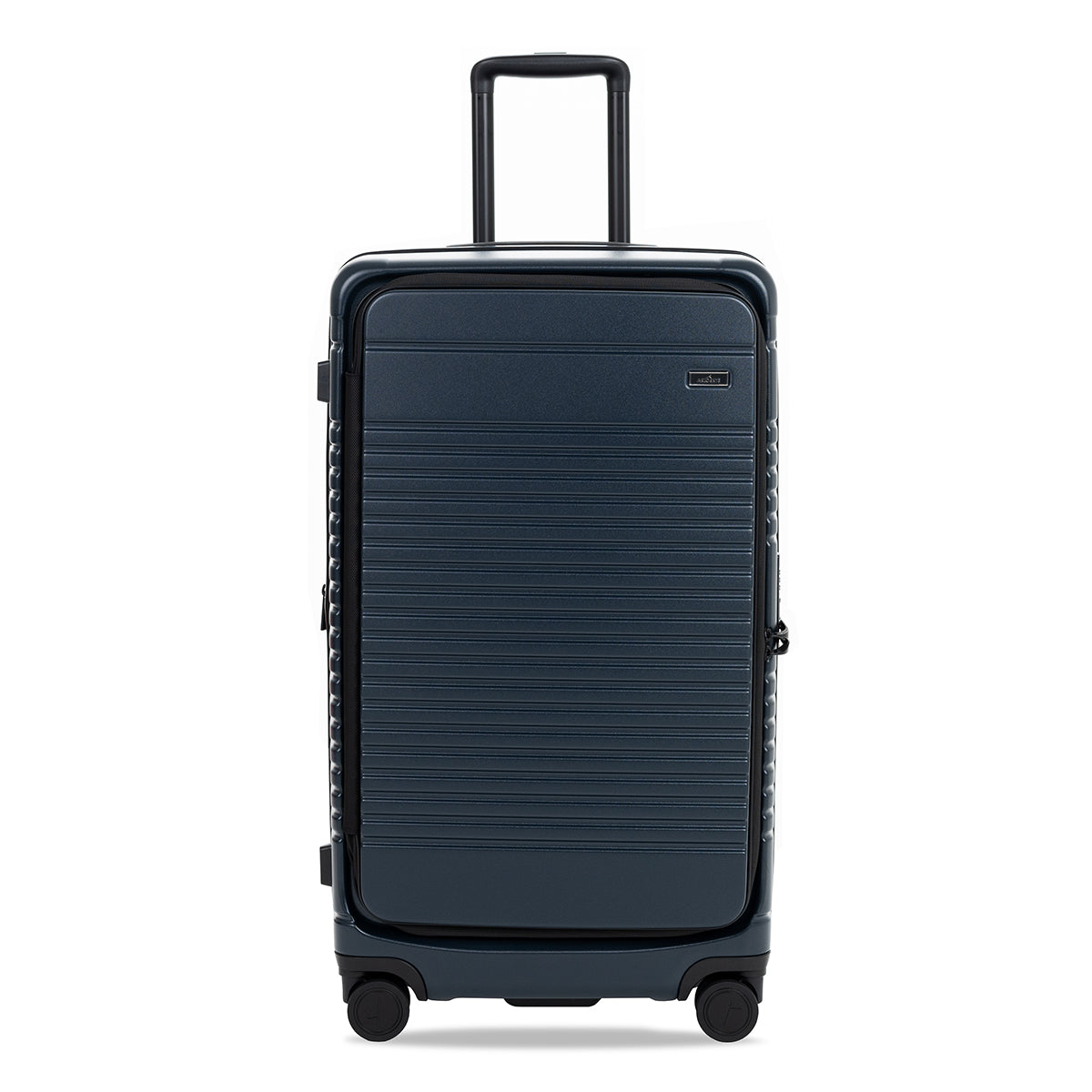The strong measures implemented to contain the spread of the coronavirus are beginning to show positive results in the U.S. and around the globe. Many of us are yearning to travel again and as life begins to get back on track, we have rounded up a few essential packing tips that will help minimize your exposure to the coronavirus (and germs in general).

Hotel Joaquin, Laguna Beach, CA. Photo: Carley Rudd
Wipe down the exterior of your bags with antibacterial wipes
If—like us—you set your luggage on your home sofa or hotel bed prior to packing or unpacking, this tip is important: wipe the exterior of your luggage and the wheels with anti-bacterial wipes and allow the surfaces to dry for four minutes. Your luggage has traveled everywhere with you and its exterior—sturdy as it may be—is obviously going get dirty with time. Therefore, it is important to avoid transferring any potential bacteria and viruses that may cling to the exterior of the case onto your own furniture, or onto your hotel bed.
Charge your electronics before your trip
To minimize community spread of the coronavirus, your goal at an airport should be to spend as little time as possible in crowded security lines and other high-density areas. One way to ensure this is to fully charge your electronics before packing them in your luggage. Power outlets are always in high demand at an airport where you'll find lots of travelers charging their phones and laptops in close proximity. So make sure to charge everything before traveling and if you're the type of person that needs reserve power buy a carry-on with a built-in, fast-charging battery.
Edit your carry-on for prohibited items
We can't stress this enough: you want to avoid spending extra time in those crowded security lines. Having TSA Pre-Check or a membership to Clear will certainly help but another way to keep things moving is to make sure that your carry-on does not contain any prohibited or restricted items, which will ultimately result in an unintended bag-check at security. Here are the most common items that result in manual bag checks:
- More than 3.4oz (100ml) of any liquid (excluding hand sanitizers—now allowed up to 12oz (355ml))
- Powder-like substances over 12oz (beware of those cute salt and pepper shakers you might be bringing back as souvenirs)
- Scissors more than 4 inches long
- Flammable items like matches
If an item is questionable, the final decision will be made by the TSA officer on duty. But you really don’t want to be in such a situation in the first place, so be smart and edit your bag before arriving at the airport. To that end, having a carry-on with an easy access front pocket is useful to store items that you may have to quickly take out during security. Arlo Skye’s new carry-on is designed specifically with this in mind.
Note: The TSA recently announced that it will ask passengers to keep all personal items, including phones, keys, and wallets, inside their carry-on bags to avoid potential contamination from the security trays. 👏👏👏
For US travel, here’s the full list of acceptable items to carry on.
Pack sweat-wicking clothing and expose your items to sunlight
Clothing designed with performance fabrics is an excellent option to pack when traveling. They are not only lightweight but also constructed with sweat-wicking and antimicrobial fabrics that repel bad odors and scents.
Equally important: store all clean underwear and socks in one dedicated suitcase pocket. That way, you know you can always count on that compartment for perpetually fresh and clean items. Separate your shoes in antimicrobial shoe bags, and we recommend stuffing newspaper in your shoes when you travel—the paper’s porous properties will eat up odors (if you prefer to devour your news digitally, sneaker balls are a great alternative). Pro tip: if you are bringing more shoes than shoe bags, consider using a shower cap to cover the soles of the shoes (it’s one of our favorite hotel amenities to hoard). Note that Arlo Skye’s interior luggage linings, accompanying shoe bags, and laundry bags are all made from high-density, antimicrobial fabrics.
When you arrive at your destination, place your stinkiest items (workout gear, shoes, tee shirts) near a sunny nook. The ultraviolet rays of the sun are known to kill microbes and bacteria.
There’s one enduring tip in the travelsphere that we do not recommend: using dryer sheets to keep your clothes from smelling. Dryer sheets are made with chemically based fragrances that can cause allergic reactions on skin—and they aren’t environmentally friendly (as they are single use). Plus, dryer sheets mask odors without resolving the underlying problem—which is typically bacteria-based.
Bring back-up supplies of meds, masks, hand sanitizers, and antibacterial wipes
In case of flight cancellations and other travel-related snafus, it’s always smart to have extra supplies of meds, masks, and antibacterial wipes. Here’s our golden rule: one set for your carry-on and one set for your checked bag. Use anti-bacterial wipes to wipe down all hard surfaces once you’re seated in the airplane (meaning armrests, TV screens, tray tables, windows, and your seat belt buckle). From time to time, you’ll end up forgetting your coveted stash of wipes in the seat pocket in front of you, which is why it’s good to have backup wipes in your checked bag (and, in these times, the local drug store by your Airbnb might not have any left). Don't forget to wipe down the door handles, faucets, dressers in your hotel room—since "clean" does not always equal disinfected.









